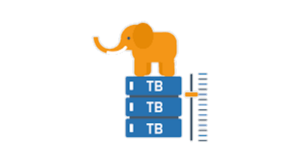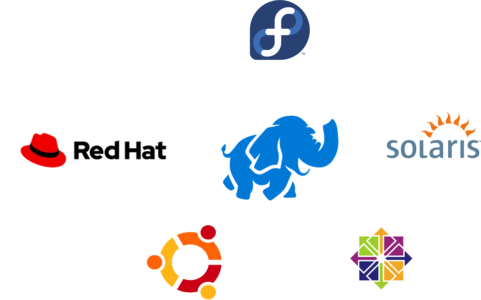Microsoft Azure Data Engineering Training Cou ...
- 16k Enrolled Learners
- Weekend
- Live Class
Hadoop Cluster is the most vital asset with strategic and high-caliber performance when you have to deal with storing and analyzing huge loads of Big Data in distributed Environment. In this article, we will about Hadoop Cluster Capacity Planning with maximum efficiency considering all the requirements.
A cluster is basically a collection. A computer cluster is a collection of computers interconnected to each other over a network. Similarly, a Hadoop Cluster is a collection of extraordinary computational systems designed and deployed to store, optimise, and analyse petabytes of Big Data with astonishing agility.
Here this Big Data Course will explain to you more about Hadoop Cluster with real-time project experience, which was well designed by Top Industry working Experts.
Now that we know what exactly a Hadoop Cluster is, let us now learn why exactly we need to plan a Hadoop Cluster and what are various factors we need to look into, in order to plan an efficient Hadoop Cluster with optimum performance

If you ever wonder how Hadoop even came into existence, it is because of the huge volume of data that the traditional data processing systems could not handle. Since the introduction of Hadoop, the volume of data also increased exponentially.
So, it is important for a Hadoop Admin to know about the volume of Data he needs to deal with and accordingly plan, organize, and set up the Hadoop Cluster with the appropriate number of nodes for an Efficient Data Management

Data Retention is all about storing only the important and valid data. There are many situations where the data arrived will be incomplete or invalid that may affect the process of Data Analysis. So, there is no point in storing such data.
Data Retention is a process where the user gets to remove outdated, invalid, and unnecessary data from the Hadoop Storage to save space and improve cluster computation speeds.

Data Storage is one of the crucial factors that come into picture when you are into planning a Hadoop Cluster. Data is never stored directly as it is obtained. It undergoes through a process called Data Compression.
Here, the obtained data is encrypted and compressed using various Data Encryption and Data Compression algorithms so that the data security is achieved and the space consumed to save the data is as minimal as possible.

This factor is purely performance-oriented. All this factor deals with is the performance of the cluster. the Work Load on the processor can be classified into three types. Intensive, normal, and low.
Some jobs like Data Storage cause low workload on the processor. Jobs like Data Querying will have intense workloads on both the processor and the storage units of the Hadoop Cluster.
Find out our Big Data Hadoop Course in Top Cities
We have discussed Hadoop Cluster and the factors involved in planning an effective Hadoop Cluster. Now, we will discuss the standard hardware requirements needed by the Hadoop Components. Hadoop’s Architecture basically has the following components.
NameNode and Secondary NameNode are the crucial parts of any Hadoop Cluster. They are expected to be highly available. The NameNode and Secondary NameNode servers are dedicated to storing the namespace storage and edit-log journaling.
Followed by the NameNode and Job Tracker, the next crucial components in a Hadoop Cluster where the actual data is stored and the Hadoop jobs get executed are data nodes and Task Tacker respectively. Let us now discuss the Hardware requirements for DataNode and Task Tracker.
| Component | Requirement |
| Number of Nodes | 24 nodes(4 Terabytes each) |
| Processor | Octa-Core Processor 2.5 GHz |
| RAM | 128 GB |
| Internet | 10 GBPS |
When it comes to software, then the Operating System becomes most important. You can set up your Hadoop cluster using the operating system of your choice. Few of the most recommended operating Systems to set up a Hadoop Cluster are,

Now, let us understand a sample use case
Now that we have understood The Hardware and the Software requirements for Hadoop Cluster Capacity Planning, we will now plan a sample Hadoop Cluster for a better understanding. The following problem is based on the same.
Let us assume that we have to deal with the minimum data of 10 TB and assume that there is a gradual growth of data, say 25% per every 3 months. In future, assuming that the data grows per every year and data in year 1 is 10,000 TB.
By then end of 5 years, let us assume that it may grow to 25,000 TB. If we assume 25% of year-by-year growth and 10,000 TB data per year, then after 5 years, the resultant data is nearly 100,000 TB.
So, how exactly can we even estimate the number of data nodes that we might require to tackle all this data? The answer is simple. Using the formula as mentioned below.
Hadoop Storage (HS) = CRS / (1-i)
Where
Calculating the number of nodes required.
Assuming that we will not be using any sort of Data Compression, hence, C is 1.
The standard replication factor for Hadoop is 3.
The Intermediate factor is 0.25, then the calculation for Hadoop, in this case, will result as follows
HS = (1*3*S) / (1-(1/4)
HS = 4S
The expected Hadoop Storage instance, in this case, is 4 times the initial storage. The following formula can be used to estimate the number of data nodes.
N = HS/D = (CRS/(1-i)) / D
Where D is Diskspace available per Node.
Let us assume that 25 TB is the available Diskspace per single node. Each Node Comprising of 27 Disks of 1 TB each. (2 TB is dedicated to Operating System). Also assuming the initial Data Size to be 5000 TB.
N = 5000/25 = 200
Hence, We need 200 Nodes in this scenario.
Unleash the power of distributed computing and scalable data processing with our Spark Certification.

With this, we come to an end of this article. I hope I have thrown some light on to your knowledge on the Hadoop Cluster Capacity Planning along with Hardware and Software required.
Now that you have understood Big data and its Technologies, check out the Big Data training in chennai by Edureka, a trusted online learning company with a network of more than 250,000 satisfied learners spread across the globe. The Edureka Big Data Hadoop Certification Training course helps learners become expert in HDFS, Yarn, MapReduce, Pig, Hive, HBase, Oozie, Flume and Sqoop using real-time use cases on Retail, Social Media, Aviation, Tourism, Finance domain.
If you have any query related to this “Hadoop Cluster Capacity Planning” article, then please write to us in the comment section below and we will respond to you as early as possible or join our Hadoop Training in Ludhiana today.
 Thank you for registering Join Edureka Meetup community for 100+ Free Webinars each month JOIN MEETUP GROUP
Thank you for registering Join Edureka Meetup community for 100+ Free Webinars each month JOIN MEETUP GROUPedureka.co
Great content! Super high-quality! Keep it up! :)